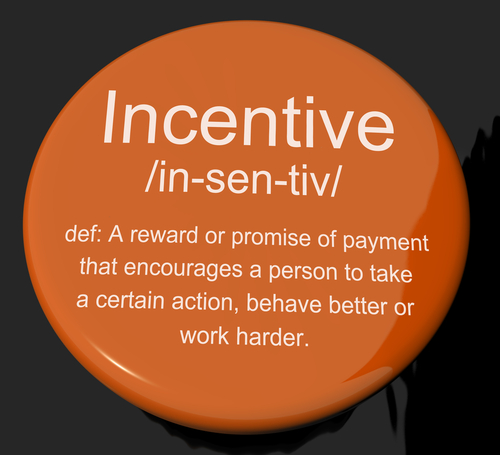
We’ve all been touched by incentives at one time or another. Sales commissions, fixed bonuses, a prize, an earn-out deal when you sold your business. You might have received a bonus as part of a team achievement. However after 30 years in business I’m not seeing great success stories. I’ve designed dozens of schemes over the years and I’d like to share with you four golden rules behind the majority that worked. I’ve also illustrated using real examples how these rules translate to the real world.
4 Golden Rules
- Be clear on the behavior you want to achieve long before you worry about the math.
- Ensure you have systems in place to stop people “gaming” the system.
- Link personal achievement as closely as possible to actual reward.
- Make it financially worthwhile.
Some Specifics
- A sales professional’s reward should be designed around the concept of “On Target Earnings” (OTE). A commercial base salary is paid plus a variable element which at target performance pays out the OTE. You need to decide how steep the curve is all the way up to the target. To incentivize target achievement I would suggest keeping the base to variable element of the OTE at 1:1. So a $150K OTE has a base of $75k and an variable element of $75k. Cap the OTE if you don’t want the sales team to be beat target! ie I suggest to you that capping incentives in this example would be crazy. Clearly industry, geography and role (inside vs outside sales role) will shape the numbers. Don’t be frightened to have multi-layers of incentives. New business, farming existing accounts, renewing subscriptions, renewing maintenance, closing deals around new products can all form part of a simple but effective incentive scheme.
- The production area of a manufacturer can be fertile ground or a graveyard for incentive schemes. Like all schemes people will try to game the system. Incentivize your production director to ship stuff and watch your inventory shoot up! You need to have the accounting system in place to make sure inventory levels are kept at reasonable levels for this incentive to work.
- Management by objective as outlined by Peter Drucker in 1954 spawned a sea of change in rewarding management. It’s scary to think it was 1954! In its basic form giving someone a set of key tasks and then rewarding them seems logical. Just be clear the manager has control of the levers to execute the actions required to hit the objective, otherwise they will fail. Break them into quarterly objectives and align then to company objectives and they will succeed.
- Cash is the lifeblood of any business. But do we incentivize our credit controller to bring in cash? You have to be careful because before you know it , your Accounts Receivable Days outstanding will drop like a stone and your customers will be squealing! However given that caveot, why not bonus on cash targets.
- I’m not against team targets but I would put minimum performance targets on each individual before they can share in any pot.
- In designing any incentive scheme be clear on definitions. I’ve seen the wrong behavior being pursued because the sales professional chased down business at any margin.
- At a senior level you might want to consider a % of profits type scheme to motivate your managing director. Remember to deploy the trick of affordability. Pay out on profits after bonus. Worked example will help. Say profits pre bonus are $2.2m and you want to pay 10% of profits as an incentive. Use this little formula: B= Bonus. Profit before bonus = X. Profit after Bonus = X-B.
Bonus = 10% (X-B) or B=10% (X-B) therefore B= 200k. For 20%. Bonus = $366.6k. - Finally let’s turn to one of the biggest incentives ever designed – the earn-out. Same rules apply – stay close to the behavior you want to inspire. An earn-out is NOT deferred consideration. It is a payment made by an acquirer to reward a performance beyond what is paid for at completion. An earn-out should be tied to improved performance not what has been achieved historically. Using a worked example of a business worth $15m. Let’s say earnings were $1.5m , a PE of 10 was paid to own the business. The earn-out of say $5m is offered to ensure the ex-owners stay and drive the business forward. I would structure an earn -out as say 12 times (Average profits next 3 years in excess of $1.5m). This motivates management to perform above $1.5m. No increased performance, no earn-out. Simple but effective.








Ian,
I enjoy your posts. Grammar in the one of 5/20/13 needs to be checked.
3. It’s sd be its
6. persued sd be pursued.
8. 1,5m sd be 1.5m.
Thanks.
Jim
Great catch. Fixed. I need to slow down!
Keep reading.
Best
Ian